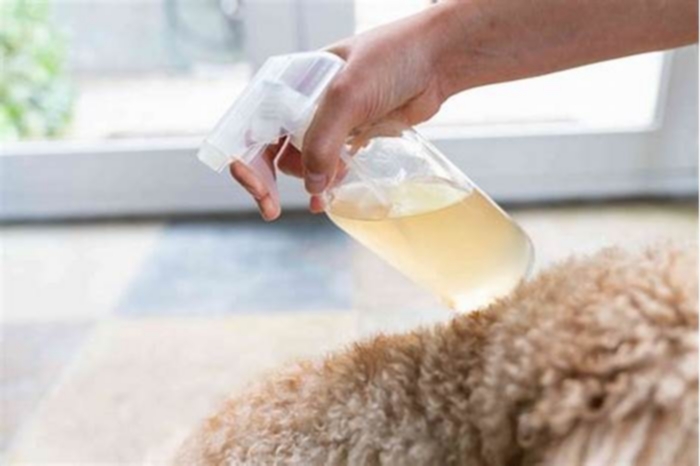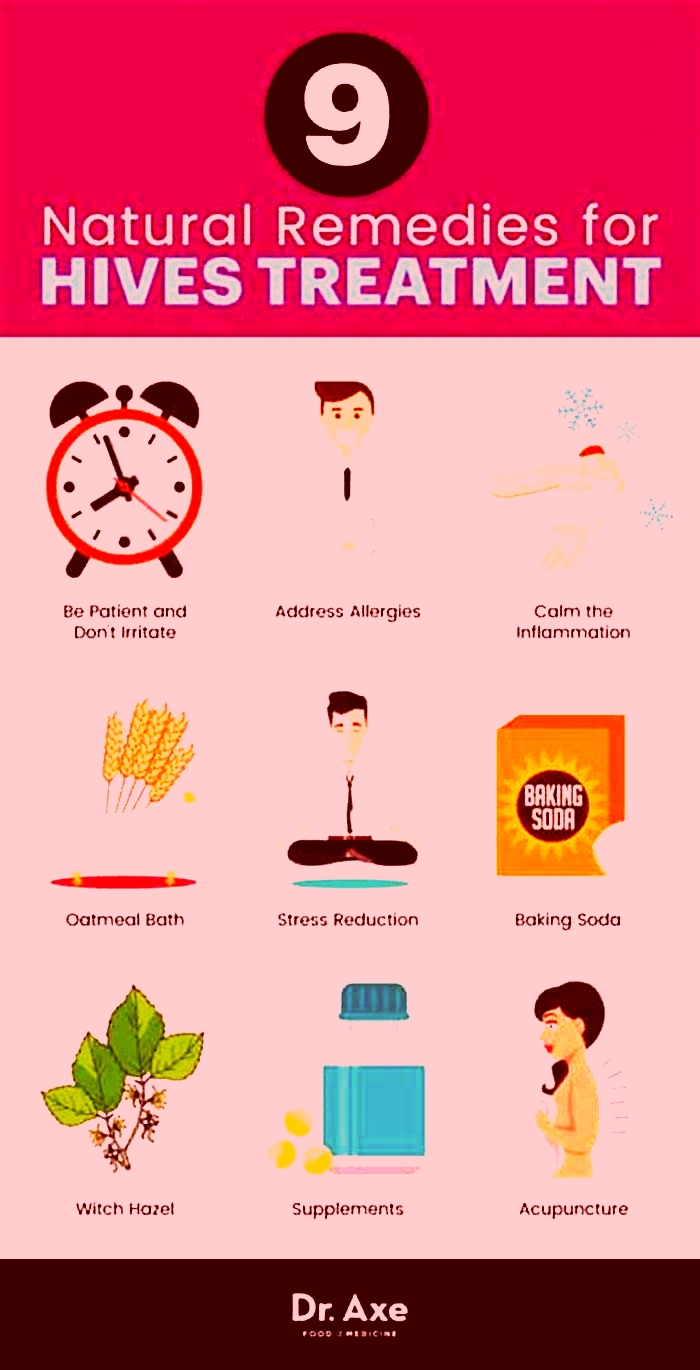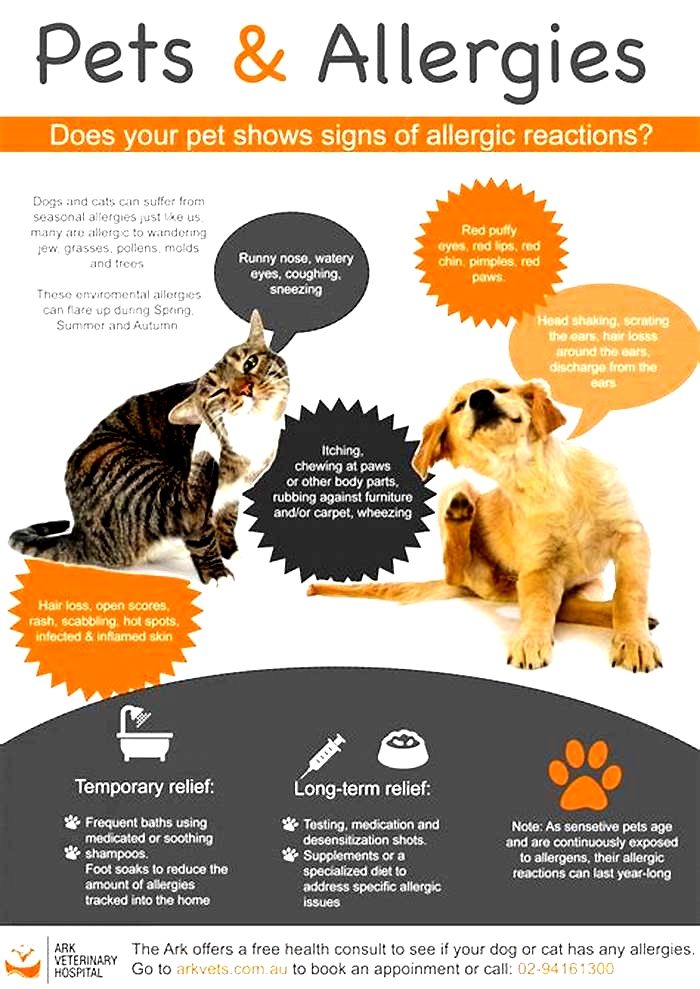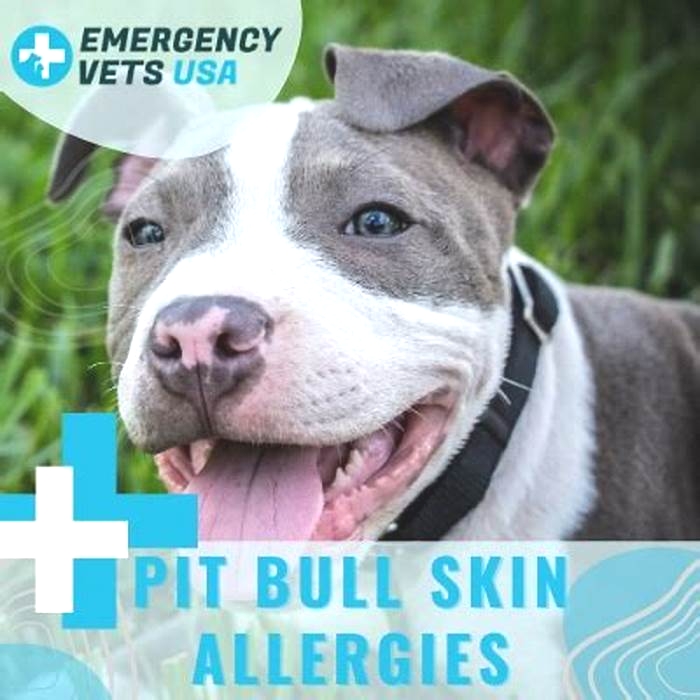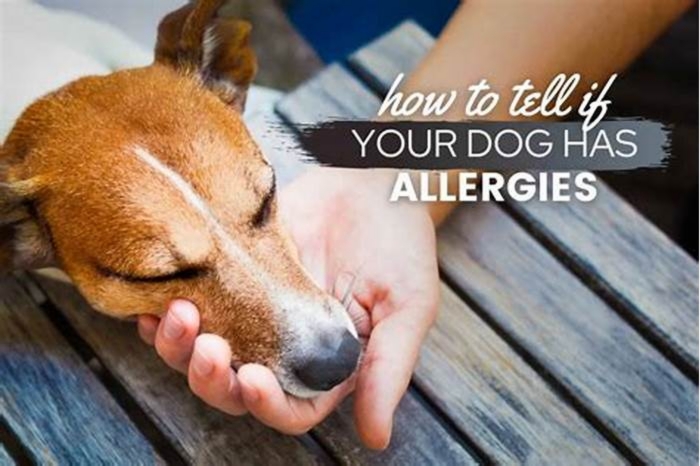How to get rid of dog allergies naturally

9 Ways To Get Rid of Dog Allergies (Simple Steps)
Owning a pet comes with plenty of perks from companionship to stress relief, unconditional love, and many other bonuses.
In most cases pet owners consider their pets as part of their family.
But what do you do when one of your family members is always making you sick?
We`re referring to the allergy-causing pet dander which can cause unpleasant and uncomfortable health complications like sinus pain, itchy eyes, a runny nose, or even skin reactions.
While you may not exactly become immune to dander, well discuss some simple ways you can get rid of dog allergy symptoms.

Our website is reader-supported through affiliate programs. If you purchase via links on our site we may earn a small commission.
Please note that this advice is for informational purposes, and is NOT professional medical advice. If you suffer strong or severe allergy symptoms, we strongly encourage you to see a qualified medical specialist about your condition.
Tips For Eliminating Dog Allergy Symptoms
1. Clean More Often
Yes, I know cleaning is no fun, but pet dander, the most common type of dog-produced allergen, sticks to anything it lands on.
It takes some effort to reduce allergy-causing pet dander in your house, however simply cleaning household surfaces is sufficient to remove pet dander, and a quick clean every few days helps enormously.
You should also pay special attention to carpet, especially since foot traffic causes dander particles to continuously be thrown back into the air you breathe.
Did you know that dried dog saliva and urine also cause allergy symptoms?
If your dog likes to sleep in one spot on the carpet, then its likely there will be dried saliva there, and these particles can become airborne.
The best way to clean your carpet is to use a vacuum cleaner withHEPA filters, and for solid surfaces, a simple wipe with a damp cloth is sufficient to remove the dog dander.
2. Groom Your Pet Regularly
Let`s face it, most dog owners do not bathe their dogs as required, usually due to a lack of time, or not enjoying the chore of grooming.
Either way failing to bathe your dog will contribute to the build-up of allergens in your dogs coat.
Regular brushing can also be great to loosen and remove dead skin cells, but if you already have allergy symptoms then breathing the loosened particles can give you a nasty reaction so wear a mask while you brush.
According to the Humane Society, bathing your dog at least once a week is sufficient to reduce the number of allergens in your dog by 84%.
Though a simple dip and scrubbing with plain water can do, it`s recommended that you bathe your dog using the a good dander shampoo.
Shampoo is not only essential for removing dander, but some have ingredients to improve your dogs skin, which in turn lowers the amount of dander produced.
Read our article about anti-itch shampoos for dogs to find out more.
3. Use Dander Removal Spray
For whatever reasons, you might find that bathing your dog is a grueling task.
If that`s so, using a dander spray remover is your next best option, they are extremely easy to use, and are recommended by vets and allergists.
Dander spray contains natural enzymes, which are responsible for fighting pet dander as well as reducing the pet odors.
The spray is handy, especially for pet owners who are expecting visitors who are allergic to dogs, and studies have found vastly reduced dander loads in homes where the spray is used weekly.
Most sprays come with a set of grooming gloves, so you just spray your dogs coat and brush them over with the gloves once a week easy!
See some dander removal sprays at Amazon
4. Install A HEPA Air Purifier
Your ability to clean your household items can only go so far. You`re surely going to miss some places, and there are times when you cant get around to cleaning life gets busy.
Installing HEPA filters in your HVAC system, or free-standing air purifiers is a great solution to filtering microscopic pet dander from the air you breathe in your home.
Air purifiers with HEPA filters work by drawing in small airborne particles and trapping them in the extremely fine filter, with pure clean air returned to the room.
What many users love about HEPA filters is that besides removing dander, they also remove other allergy-causing particles such as mold, lint, and dust.
Most importantly, the air filters can provide a constant flow of fresh and quality air into your household.
See our recommendations for effective HEPA furnace filters
5. Designate Pet Free Spaces In Your Home
Yes, as much as we often like to have our favorite friends sitting on our bed wagging their tails, if youre an allergy sufferer then this brings the problem to the worst possible place.
Anywhere you spend large amounts of time will expose you to more allergens, so its worth thinking about where you do and dont want your dog to be.
One other obvious place is your lounge suite, as you will likely sit there regularly binge-watching some bizarre new Netflix series!
Once you make a final decision, then you can either close doors to those rooms, or train your dog to know where they are allowed to go in your house.
6. Cover Your Furniture With Washable Hypoallergenic Covers
Allowing your dog to roam freely in every corner of your household, including the bedroom is not a good idea.
Once they are on your bed, your pooch is likely to leave traces of dander, which is highly likely to cause an allergic reaction while you sleep there for 8 hours night after night.
However much you try to restrict your dog from sleeping on your bed or lounge suite, sometimes they may sneak where they shouldnt be especially the cheeky ones!
Removable and washable covers are one way you can help combat this problem, as they will protect the surfaces underneath from getting loaded with allergens, and can be cleaned regularly.
Get hypoallergenic bedding covers at Amazon
7. Use A Dust Mite Spray
Aside from having allergic reactions to pet allergens, quite often people have reactions to the microscopic creatures that feed on those allergens such as dust mites.
Reducing dander around your home will help reduce dust mite numbers, since they will have less food, however you can reduce the occurrence of dust mites further with special sprays.
Get mite and allergy control sprays at Amazon
8. Allergy Immunotherapy
Also referred to as allergy shots,allergy immunotherapyis a treatment option that lessens your reaction to the allergens you get treated for.
Similar to a vaccine jab, allergy shots work by decreasing your sensitivity to dog allergens, helping to greatly reduce your symptoms.
Allergy shots work by exposing the human body to mild amounts of allergy-causing contaminants, and helps the body to build up an immunity or tolerance to the allergens.
To get these you will need to speak to your doctor for advice.
9. Get Rid Of Your Dog
Before you begin demonizing me, this is the first thing an allergist will recommend, but obviously for any true dog lover this is the absolute last resort.
While giving your dog away is completely unthinkable, to some the daily misery of strong allergy symptoms is too much to handle.
Though the idea is heartbreaking, it does not mean you can never see your dog again.
You could take them to a farm, give them to a family member, or friend who you trust to look after and love your dog as much as you do.
Sources
https://www.aaaai.org/conditions-and-treatments/library/allergy-library/allergy-shots-(immunotherapy)
Mites on dogs: How to recognize and treat these parasites
Discovering mites on dogs is always going to be alarming. On the one hand, it means these tiny arachnids are living on your pet, causing discomfort, hair loss, inflammation and itching. On the other hand, it also means theyre in your home, with the potential of infecting you and the rest of your family. Feeling grossed out all of a sudden? Weve got you.
Since mites are microscopic (theyre smaller than the width of a human hair, near-impossible to see with the naked eye and look like small black dots), they can be easily missed until you begin to notice the symptoms. Left untreated, they can cause two separate skin diseases in dogs: demodicosis and scabies.
Since mites can be passed from dog to dog either directly or indirectly, you may find you have an even larger problem on your hands if you have more than one pooch at home. In any case, although you can use the best dog shampoo to keep coats clean and smelling fresh, you shouldnt attempt to directly treat mites yourself. Home remedies are ineffective and they can also harm your dog.
Instead, regardless of which species of mite is causing your dogs skin problems, you will need an accurate diagnosis and veterinarian-prescribed treatment if you want to eliminate mites. To that end, its a good idea to check out a vet's guide to mange (the name for an itchy skin condition caused by mites) as well as the advice from our expert vet Dr Catherine Barnette below.
Catherine Barnette DVMAfter graduating from the University of Florida, having gained a B.S. in Zoology and her Doctor of Veterinary Medicine (DVM), pet lover and expert Dr Barnette went on to rack up 15 years of clinical experience working as a small animal veterinarian, treating fur friends including dogs, cats, and occasional exotic patients. Dr Barnette now creates educational copy for PetsRadar and content for fellow veterinarians and pet owners, working as a freelance veterinary writer.
Types of mites on dogs
Two common mites affect dogs: Demodex canis (often referred to as demodex) and Sarcoptes scabiei (often referred to as sarcoptes).
Demodex canis
Demodex mites cause a skin condition referred to as demodicosis or demodectic mange. Demodicosis is most common in young puppies (whose immune systems are not fully developed) and in dogs that are immunosuppressed due to stress, immunosuppressive drugs, or an underlying illness.
Most young puppies are infected with a few demodex mites by their mother when they are very young but, as a puppy grows and matures, their immune system keeps these mites in check and prevents an active, overwhelming infection. In some cases, however, the dogs immune system fails to suppress the mites, allowing the mites to proliferate within the hair follicles. But demodicosis is not a contagious skin condition; your dog cannot become infected with demodex mites through contact with an infected dog.
Sarcoptes mites
Sarcoptes mites cause a condition known as scabies or sarcoptic mange. Scabies is a contagious skin disease. This infection spreads from an infected dog to an uninfected dog. In rare cases, even cats can be infected with scabies. Scabies typically spreads when two animals are in direct contact with each other, but the mites can also survive on bedding and other surfaces for several days and be passed in that way.
Can you see dog mites with the human eye?
Some animal mites can be seen with the naked eye, such as Cheyletiellia, also known as walking dandruff. This mite is most common in cats and rabbits, but it can occasionally infect dogs.
Demodex and sarcoptes, the two most common mites in dogs, however, are very small, measuring between 0.5 and 2.0mm in length. That makes them virtually invisible to the naked eye. If your dog has demodicosis or scabies, youll tend to only see evidence of the damage caused by the mites.
Symptoms
Demodicosis and scabies affect the skin of infected dogs and, since there can be significant overlap between these two conditions, its important to work with a veterinarian to obtain an accurate diagnosis.
The most common sign of canine demodex is hair loss. Demodex mites live within the hair follicle, resulting in inflammation that causes the hair to fall out. This hair loss may affect a single part of the body (localized demodex) or may be widespread (generalized demodex).
Some affected dogs also develop itching and redness of the skin. Itching and inflammation may indicate the presence of a secondary bacterial infection.
The most common sign of scabies is severe itching. The saliva and fecal matter of scabies mites trigger a severe itch response in most dogs; affected dogs may be so itchy that they seem unable to get comfortable. While scabies mites do not affect the hair follicles, affected dogs may scratch themselves so vigorously that they scratch their hair out. The skin is often red and inflamed, and dogs may be especially itchy around their ears.
Can I catch mites from my dog?
The zoonotic (animal to human) transmission potential of mites depends on which mite your dog is infected with. Demodicosis is not contagious to humans. We have our own species of demodex mite but we cannot become infected with canine demodex mites.
Scabies, in contrast, is a zoonotic parasite. You can become infected with scabies through contact with an infected dog. Fortunately, the scabies mites that live on dogs do not survive on humans for very long. (We have our own human-specific scabies mite that causes human scabies infections.)
Dog scabies can trigger intense itching in people, but this is often short-lived and will resolve within a number of days. Canine scabies does not typically cause long-lasting infections in humans.
When to see a vet
If you suspect that your dog may have mites (or any other skin condition), schedule an appointment with your veterinarian. You will be asked a number of questions in order to gain an understanding of your dogs history. Your vet will also perform a thorough physical examination, including a detailed evaluation of your dogs skin. Based on your dogs history and clinical appearance, the veterinarian will recommend appropriate diagnostic tests to determine the cause of your dogs skin issues.
Demodicosis is usually easy to diagnose using a test called a skin scrape. In this test, your vet obtains samples from the deep layers of the skin and examines them under the microscope. Seeing demodex mites on the skin scrape confirms a diagnosis of demodicosis.
A superficial (shallow) skin scrape may be beneficial in diagnosing scabies, but sarcoptes mites are not always easy to find. In some cases, repeated skin scrapes may fail to find mites in dogs infected with scabies. Therefore, scabies is often diagnosed based on clinical appearance and response to appropriate treatment.
How to get rid of mites on dogs
Your veterinarian will prescribe an appropriate treatment, depending on whether your dog is diagnosed with demodex or scabies. It includes oral medications, spot-on topical products, or medicated shampoos. If your dog has developed a secondary skin infection as a result of mites, your veterinarian may also prescribe an antibiotic to give with your dogs skin mite treatment.
If your dog is diagnosed with scabies, you can expect to see a response to treatment within a few weeks, and the mites will likely be cleared within six to eight weeks. Demodex often requires a more prolonged course of treatment. Dogs are typically rechecked once monthly during treatment (to assess response to therapy) and treatment may be continued for six months or more.
Mites are not the only living nuisances affecting dogs. You can find out how to treat a dog with worms and learn how to get rid of fleas in your home and on your pet.

